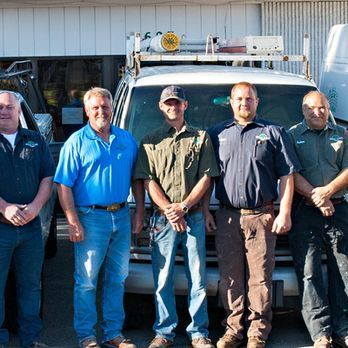What to Do If Your House Floods?
Frozen pipes are a common issue, especially during the cold winter months. When temperatures drop, the water inside pipes can freeze, potentially causing them to burst. Dealing with frozen pipes can be stressful, but with the right knowledge and tools, you can often resolve the issue yourself and prevent costly damage. This guide walks you through the steps to safely thaw and fix frozen pipes.
Emergency Guide: What to Do If Your House Floods
When water starts to enter your home, it's crucial to act swiftly and methodically. Flooding can cause significant damage, but knowing what to do in this emergency can make a world of difference. Here's a step-by-step guide to help you navigate this challenging situation.
Step 1: Ensure Safety First
Turn Off Utilities: If it's safe to do so, turn off your home's electricity, gas, and water supply to prevent additional hazards.
Assess Risks: Evaluate the safety of the floodwater and your home's structural integrity. Avoid walking through deep water and be cautious of any electrical hazards.
Step 2: Evacuate if Necessary
If the flooding is severe and poses a threat to your safety, evacuate your home. Remember to bring essential items like identification, medications, and important documents.
Step 3: Contact Emergency Services
Call 911 or your local emergency services to report the flooding. They can dispatch help and guide what to do next.
Step 4: Document the Damage
Before you start any cleanup or restoration efforts, document the damage. Take photos or videos of the flooded areas for insurance purposes.
Step 5: Stop the Source of Water
If it's safe to do so, attempt to stop the source of the flooding. This might involve closing a water main valve or blocking entry points.
Step 6: Begin Cleanup Safely
Remove Water: Use a sump pump, wet/dry vacuum, or buckets to remove standing water. Dispose of the water away from your home.
Dispose of Contaminated Items: Floodwater may carry contaminants, so discard any items that cannot be thoroughly cleaned and disinfected.
Sanitize and Disinfect: Clean and disinfect all flooded areas to prevent mold growth and ensure a safe living environment.
Step 7: Contact Your Insurance Company
Notify your insurance company about the flooding and begin the claims process. Provide them with the documentation you collected in Step 4.
Step 8: Seek Professional Help
Depending on the extent of the damage, you may need professional help for repairs and restoration. Consider hiring a water damage restoration company to ensure a thorough cleanup.
Step 9: Prevent Future Flooding
After addressing the immediate situation, take steps to prevent future flooding. This may involve installing sump pumps, improving drainage, or raising electrical systems.
Step 10: Stay Informed
Keep yourself informed about the latest developments, safety recommendations, and any evacuation orders in your area. Local authorities and weather forecasts can provide essential information.
Facing a house flood is a challenging and stressful experience, but by following this step-by-step emergency guide, you can protect your home and loved ones from the worst effects of flooding. Swift and informed action is key to recovery and restoration.

Emergency Plumbers
At sunshine plumbers, we are proud to be on call 24 hours a day, 365 days a year, ready to provide prompt and reliable emergency plumbing services
Residential Plumbing
Let sunshine plumbers take care of your plumbing needs, and we'll make sure your home's plumbing system runs smoothly and efficiently.
Commercial Plumbing
Trust sunshine plumbers to keep your commercial plumbing system in top shape, ensuring smooth operations and customer satisfaction.
